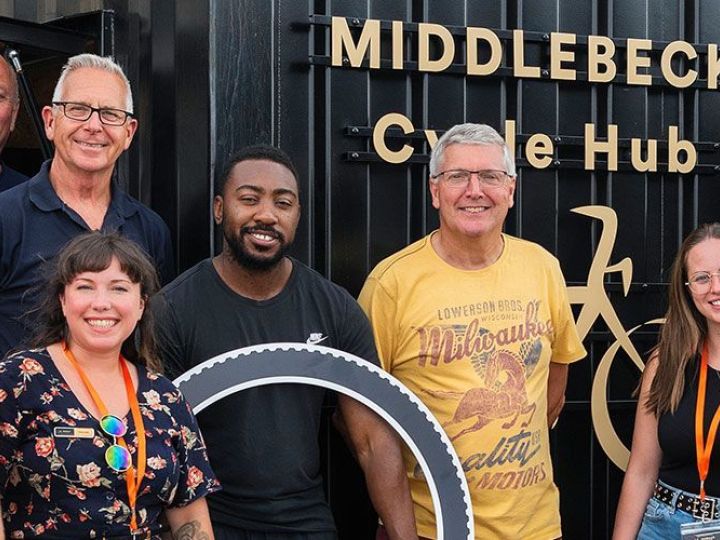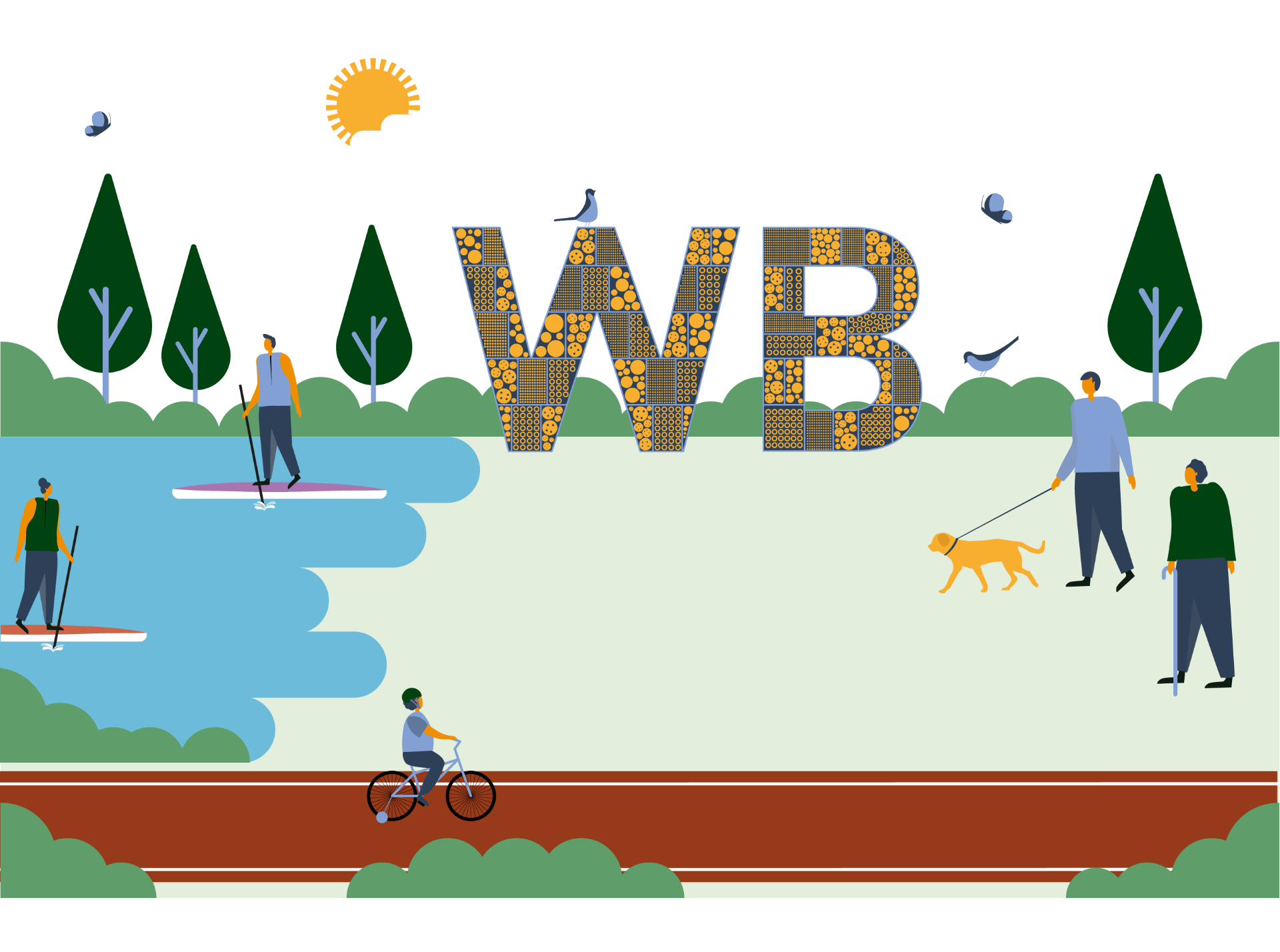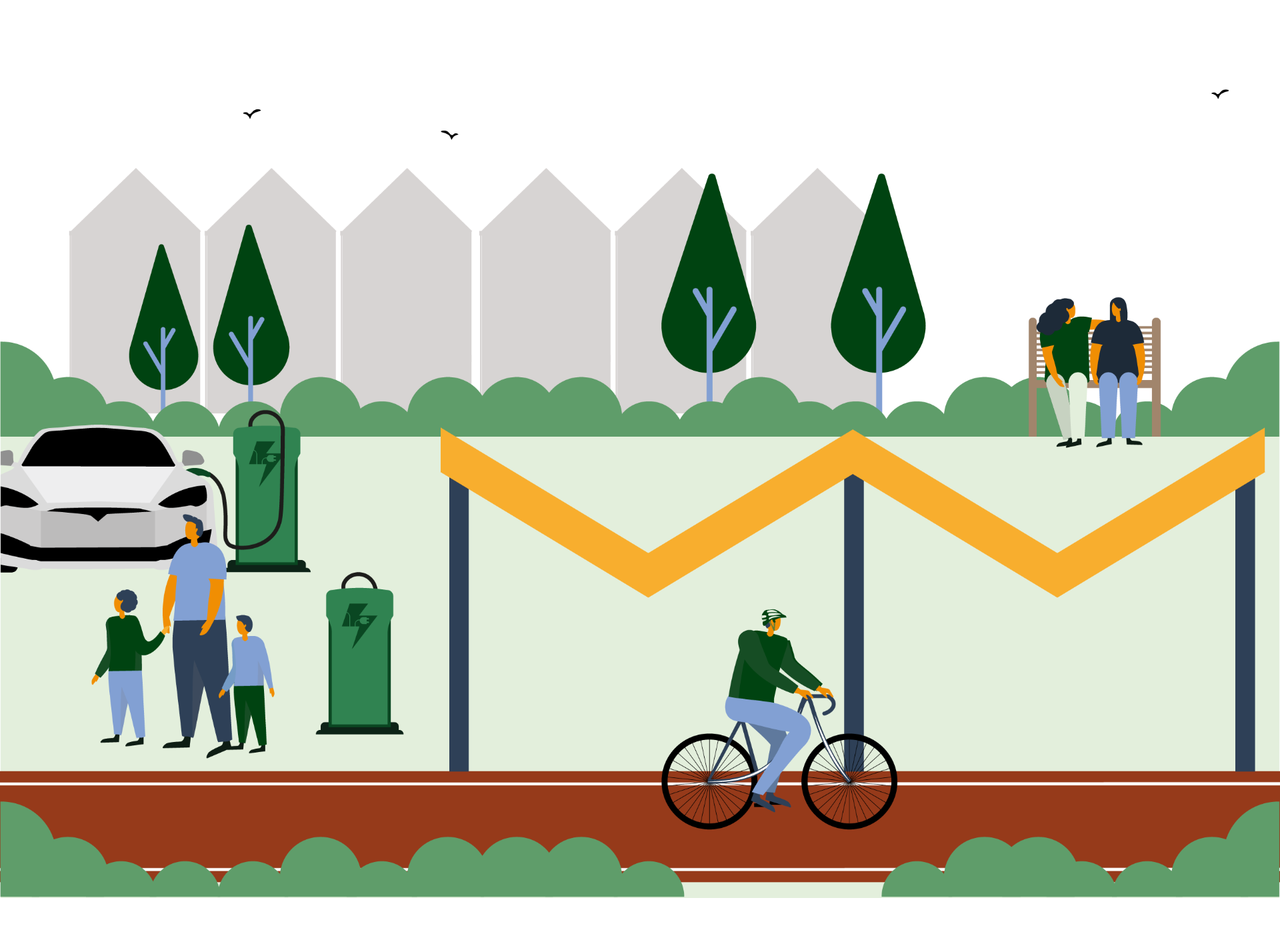
Physical
Objective:
Net carbon zero
Our full 2024 performance is set out here
Overview
The Physical capital relates to the community and commercial buildings as well as green, grey and blue infrastructure that we retain and manage.
Why it matters
‘Net zero’ is reached when the amount of greenhouse gas released into the atmosphere is no more than the amount removed. In response we have put a strong emphasis on reducing the whole life carbon footprint of our Strategic Sites in line with a Net Zero approach by 2040. This will be achieved through the minimisation of embodied carbon in the design and construction of infrastructure and buildings, a flexible energy strategy prioritising highly efficient sources to reduce operational carbon and the deployment of renewable energy to future-proof our sites. Our visionary design guides for the physical works we obtain planning consents for support this objective by focusing on increased sustainable transport and water resilience through our master planning design activities.
Action areas
- Carbon footprint
- Resilience
- Connectivity
Carbon footprint
Carbon reduction has been a consistent measure for our business, focusing on operational carbon from the space we own or occupy as well as from our own direct activities. It represents the part of our carbon footprint over which we have absolute control and for which we have full responsibility.
However our operational Scope 1 and 2 emissions will only account for 4% of our business as usual carbon footprint over the years 2021–2035 with the remaining 96% being Scope 3 emissions resulting directly and indirectly from infrastructure and buildings commissioned by Urban&Civic.
In 2021, we set the following Net Zero objectives, and developed the initial ‘Map to Net Zero’ plan to achieve them, to act as a catalyst for the business to reduce its carbon emissions:
- Net Zero by 2030 for Scope 1 and 2 emissions, by keeping cumulative absolute emissions well within the carbon budget for the 1.5 degree scenario of Science Based Targets (SBTs).
- Net Zero by 2040 for Scope 3 emissions resulting directly and indirectly from infrastructure and buildings commissioned by Urban&Civic. Cumulative absolute Scope 3 emissions to remain within the carbon budget for the 1.5 degree scenario of Science Based Targets (SBTs).
We have since been gathering a breadth of empirical carbon data from across our supply chain and undertaking a review of how these objectives could be realised. Decarbonisation of electricity supplied by the UK national grid strongly affects the achievement of these objectives together with the changing landscape of industry standards and frameworks governing how Net Zero should be measured and assessed.
In light of our analysis to date, we have had to adapt our objectives to remain flexible in response to the external factors described as follows:
- introduce intensity based 2030 “interim” SBTi (Science Based Targets initiative) aligned targets for all scopes to ensure we remain on the right pathway towards achieving Net Zero (subject to grid decarbonisation);
- continue to work towards the Net Zero timescales set originally but recognise these are challenging because there are influencing factors beyond our control, and subsequent commercial considerations;
- align with the requirements of the Science Based Targets initiative (SBTi) to 2030 but without making a formal commitment, pursuing formal target validation or being required to publicly disclose annual performance;
- undertake further analysis on Scope 3 opportunities and impacts beyond 2030 before committing to a date for achieving Net Zero; and
- undertake further work to satisfy ourselves that we stand a good chance of meeting, both technically and commercially, the science-based carbon reductions required before making a commitment under the SBTi.
Our targets for 2025 remain unchanged and we continue to measure ourselves against them.
Targets
2025 targets:
- Achieve an annual reduction of 7% in absolute Scope 1 and 2 emissions as per SECR reporting (tonnes CO2e). This equates to a 28 per cent reduction compared to 2020/2021 data.
- Achieve a reduction of 19% under a 1.5 degree scenario in Scope 3 emissions compared to business as usual encompassing whole life capital and operational carbon for all directly instructed infrastructure and buildings delivered in the year.
- Develop a complete inventory for all Scope 3 emissions for the year 2022/2023 to establish the actual Scope 3 baseline across all the work of Urban&Civic.
Performance
In 2023/24, we decreased our operational Scope 1 and 2 carbon emissions by 43% against a 2021 baseline, thereby exceeding our 2025 target of 28%. The key reason for this was the transformer shutdown at Alconbury Weald, significantly reducing electricity losses. There was also a reduction in gas usage at Middlehaven and a decline in transport emissions due to the replacement of company vehicles with efficient alternatives. To ensure we continue this downward trend, we have included a number of carbon reduction actions in the 2024/25 business plans for all Strategic Sites and identified actions for future years to achieve Net Zero. These actions align with the energy saving opportunities identified in our ESOS (Energy Saving Opportunity Scheme) Phase 3 compliance report and include the following:
- Adopt more energy efficient behaviours in our occupied spaces.
- Replace building services with more energy efficient equipment at end-of-life.
- Phase out gas and other fossil fuel uses.
- Install renewable energy systems where viable to do so.
Graph showing the target reduction and actual reduction in operational Scope 1 and 2 carbon emissions for the FY 2023/24.
This year, we have continued to measure our Scope 3 carbon footprint through engagement with our supply chain. The data collection produced a footprint of 11,356 tonnes CO2, broadly 14 times higher than our Scope 1 and 2 emissions of 806 tonnes CO2. 97.6% of our Scope 3 emissions were Category 2 'capital goods' emissions (i.e. upfront carbon in buildings and infrastructure completed or under construction), with the remainder comprising employee commuting and business travel. Against the 2025 target of achieving a 19% reduction against Business as Usual emissions for Scope 3, Urban&Civic are currently performing at a 12% reduction and therefore are below target.
Resilience
Resilience is core to the continual success of Urban&Civic’s developments and we are determined that our projects are delivered and managed robustly for the long term. We are focusing on the role of the water cycle in our developments and have been working with statutory water authorities, consultants and our housebuilder partners to confirm our direction of travel towards minimisation of water consumption and maximising the efficiency of our whole water cycles.
Target
2025 target:
- Limit water consumption on all new properties to a maximum of 90 litres per person per day (l/p/d) by 2025.
Performance
For 2023/24, we managed to obtain water consumption data from all of our sites with occupied homes. The methods associated with this have varied but progress has again been made against last year. For a number of sites, the consumption data was provided in water flow per second, which has then been scaled up to a litres per day figure taking into account the number of residents in homes and how many water outlets there are throughout the development. For other sites, a simple consumption figure per household was provided by the respective water companies. Consumption at most sites exceeded the target of 90 litres of water consumed per person per day. The overall site average was 120 l/p/d.
These results are valuable in showing us where and how to improve the water efficiency of our sites together with our housebuilder partners and also identifying the issues in obtaining the performance data needed to credibly assess this metric. In 2024/25, we will continue working with the water companies to access a broader dataset that is more representative of performance and support their water efficiency engagement campaigns with residents where relevant. We will also work closely with housebuilders to implement more water efficient appliances and technologies, and engage with residents on effective ways to reduce water consumption in their homes.
Graph showing the average litres of water consumed per person per day in all new
properties constructed from October 2021.
Connectivity
As Master Developer, we are in a unique position to provide access to and promote sustainable transport. It is a critical aspect of the pathway to net zero, and we see this as the biggest opportunity to positively contribute to reducing emissions in our direct influence.
Target
2025 target:
Construct 95% of occupied buildings within 200m of a high-quality cycle way as specified by SUSTRANS (this includes lighting and intermittent segregation detail in the case of hybrid cycle/footpaths, protective barriers from cars, etc.).
Performance
Average performance in 2023/24 has stayed at 100% for the sites where buildings have been delivered, currently exceeding the 2025 target of 95%.
Graph showing the percentage of occupied buildings within 200m of a dedicated cycle way
Case studies
Waterbeach’s first primary school goes green
The Waterbeach team are celebrating a significant milestone with proposals for its first primary school being announced by Cambridgeshire County Council.
Read more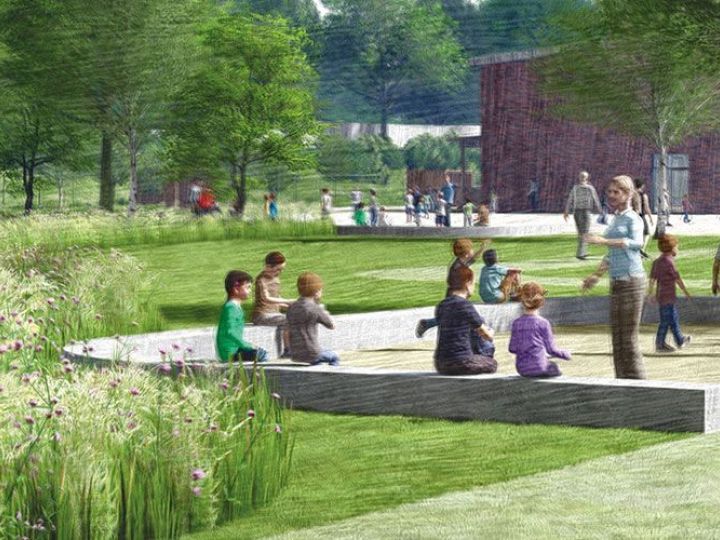
U&C and Buckingham collaborate to slash Co2 emissions
Urban&Civic and Buckingham Group Contracting Ltd (Buckingham) agreed an innovative, collaborative cost sharing agreement to use 1 million litres of Hydrotreated Vegetable Oil (HVO) instead of diesel for earthmoving at Priors Hall Park.
Read more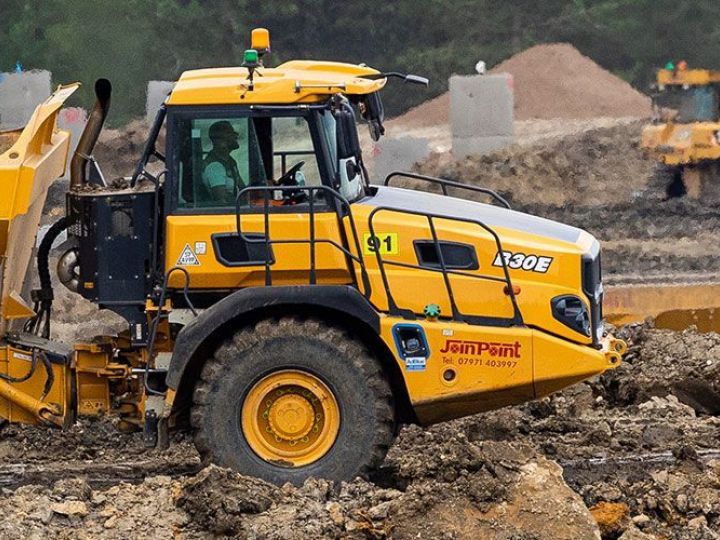
Wealds on the Bus clock up 10,000 trips
The Alconbury Weald team has worked in partnership with the local authority and Huntingdon-based Dews Coaches to launch a new bus service, the AW1.
Read more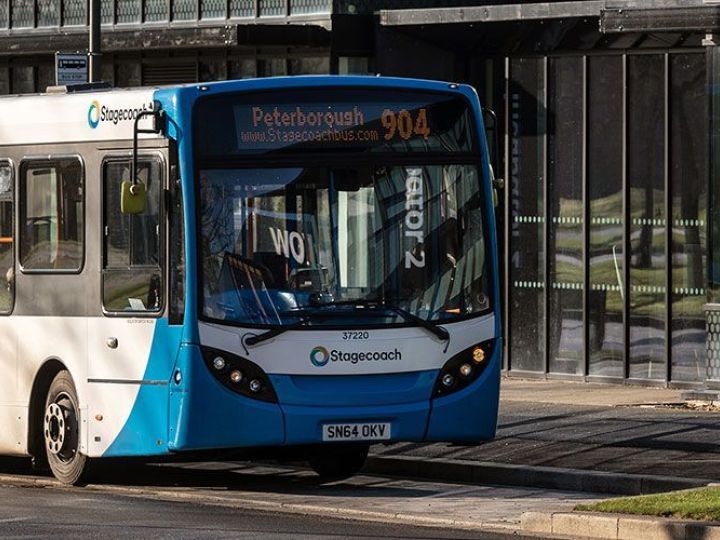
Working to make our signage more sustainable
At Urban&Civic, sustainability is at the heart of what we do; not only in delivering exceptional new developments, but across the business as a whole.
Read more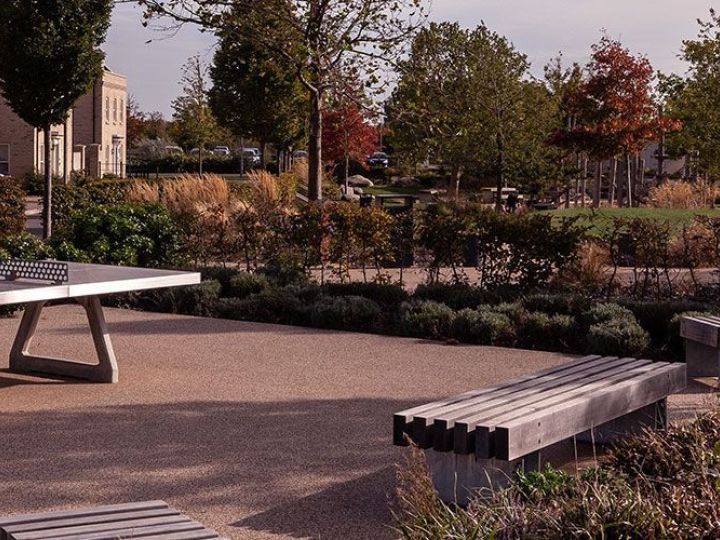
Urban&Civic and Catesby come together in a new office at Houlton
2022 saw the relocation of the Houlton Project Team and the Head Office of Catesby Estates, to the newly constructed Orchard House, an office space in the heart of Dollman Farm, close to the The Tuning Fork and directly above Houlton’s Co-Op.
Read more
Houlton School Awards
U&C win a national award (a pineapple) issued by The Design Council as part of the Festival of Place for Best Creative Retrofit.
Read more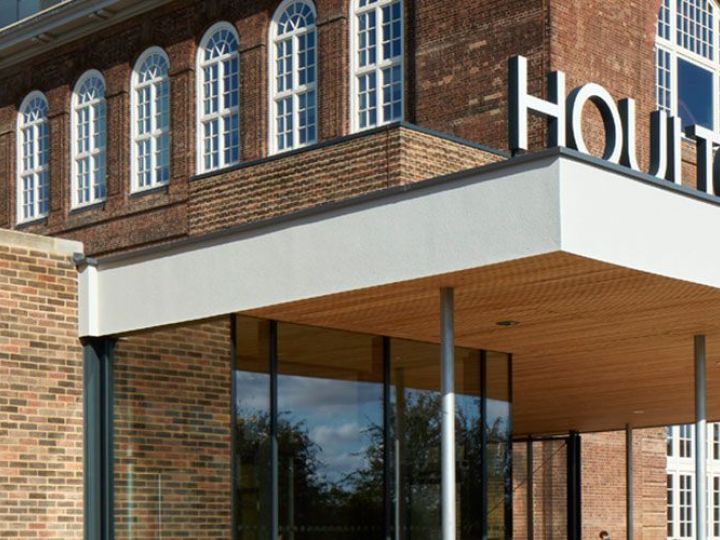
Buses
Sustainable travel is a core part of the master developer approach, promoting early options for walking, cycling and buses. At Houlton, when the development of 6,200 homes is complete residents will be no more than 400 meters away from a bus stop, making access to local towns easy.
Read more
Walking groups
Urban & Civic in partnership with Sustrans have been organising weekly led walks through Middlebeck, Newark with the aim of encouraging an active lifestyle. Our Community Engagement Officer wanted the walks to be a fun and sociable activity for people who want reap the benefits of exercise.
Read more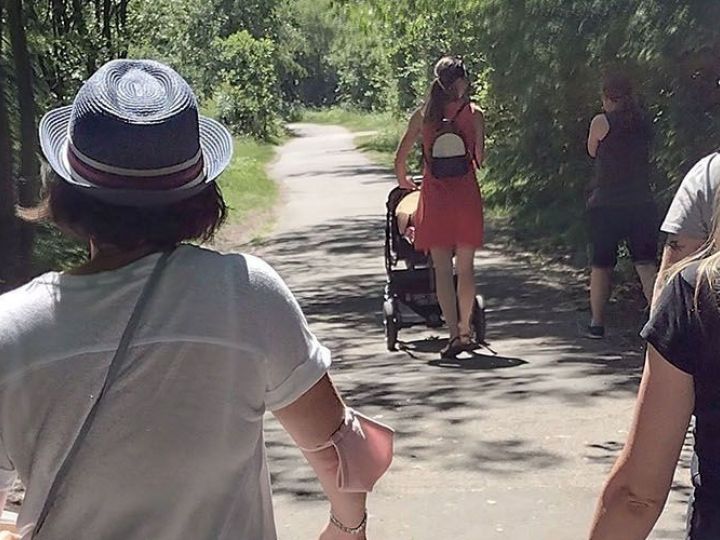
E-scooter safety session success!
Northamptonshire’s pilot of Voi e-scooters to promote greener travel options and reduce traffic, saw Priors Hall Park district centre host a 6-hour e-scooter safety event for residents.
Read more
Empowering our people to cut greenhouse gas emissions
As part of our ongoing commitment to educating on carbon, we have engaged Groundwork to deliver carbon literacy training to our colleagues and have an ambition to provide this accredited learning to at least 80 per cent of our employees by June 2022.
Read more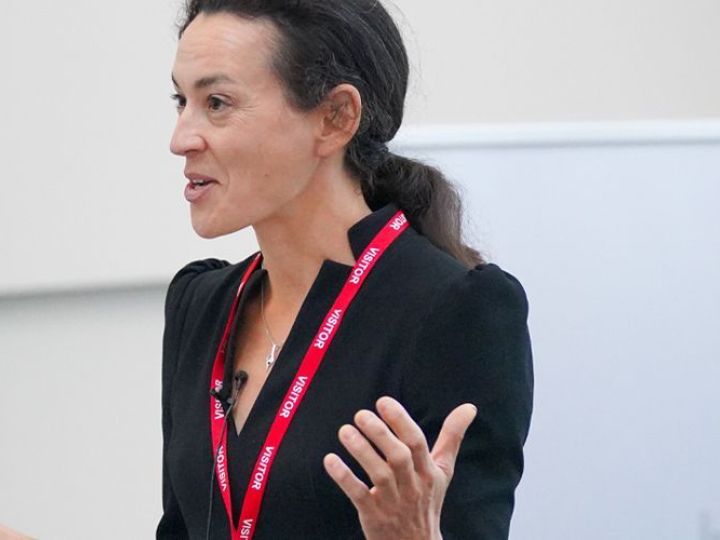
Alconbury Weald residents encouraged to get on their bikes
Alconbury Weald is aiming to become a truly sustainable community: that’s partly about putting in place the right infrastructure and services for people to lead low carbon lives as the development rolls out, and creating a culture where people choose low carbon travel options.
Read more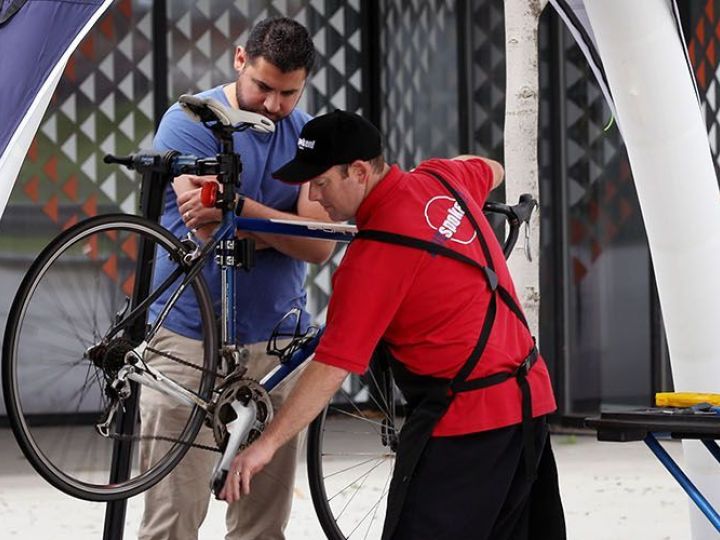
Treeconomics at Alconbury Weald
Treeconomics is a social enterprise that seeks to highlight the benefits of trees and works to understand how they improve our urban spaces, making them better places to live.
Read more
Calling all cycling smoothies
The long awaited launch of the Middlebeck cycle hub was a huge success in July, with local residents attending from across Newark to get their bike serviced and to participate in the celebrations.
Read more